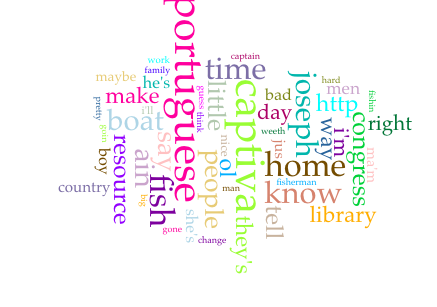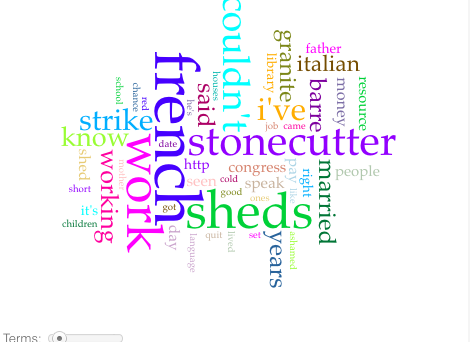This semester, many digital tools that I had no idea existed were introduced to me. The specific ones we learned this semester helped me to promote my argument in my final exhibit, which was that the Federal Theatre Project influenced entertainment during the ’30s, especially with film. The tools I chose for my exhibit were image glitching, the timeline tool, and image analysis. My specific exhibit was definitely centered more around the visual aspect versus any kind of writing/word aspect. My exhibit was on the FTP and the film industry, which are both topics that require many visual aspects.
I chose to use image glitching for my first skill of my exhibit because it brought to focus more important aspects of the film and performance posters/photos. Glitching has been my favorite tool from this semester because it really transforms an image and helps you view it in a different way, usually a way you wouldn’t have expected it to transform into. 1
I chose to use the timeline tool because it helped to show the difference in the dates between the FTP and the films. It helped highlight the important times in the FTP and helped show that the two films were released after the FTP funded ended, proving my argument that these two were the most influenced films from the FTP.
I chose to use image analysis on my glitched photos because I thought it was important to analyze different parts of the two movie posters and photos. 2 It helped push my point that the advancement in film was to make potential audience members feel more involved and also see detail better, something that they were already able to experience during the FTP performances. It helped gain a better historical view, one could argue.
The history of the 1930’s was something that I wasn’t quite clear on. All I really knew was The Great Depression happened during this time and that was really it. I was able to learn about the literature, music, art, and entertainment of the 1930’s, something that never crossed my mind. 3 Learning that folk music was so huge during this time and that the song “This Land is Your Land” was released during the ’30s and the true meaning behind it was definitely a surprise. History classes only really teach about Herbert Hoover and The Great Depression when talking about the ’30s, so this class definitely gave me a better perspective of what the 1930s was really like. The 1930s really created legacies such as new technology, color in film, and the perseverance of American citizens during hard times.
This semester I was able to learn how to be an ethical citizen and pay more attention to copyright. 4 I never really paid attention to copyright, I just knew it was something to avoid, but I never knew what would classify as it or to even check if anything had restricted rights on it. When we had to do metadata for items we put in Omeka, it taught me a little bit about copyright and I was definitely looking out to avoid any items that had restricted rights on it. Also, learning to fact check everything was something I learned. The article about the professor from George Mason stuck out to me earlier in the semester, and then hearing him explain his story in person only made me feel better about constantly fact checking everything and making sure I have accurate information.
I would say one of the most important things I learned this semester was that using digital tools is a great way to learn history. It adds a different approach to history and helps you analyze in a different way. I almost feel like I learned more about history by using these interactive tools than I would have learned from a textbook.



